Working tirelessly to keep the lights on and the news flowing
MinnPost's Ava Kian dives into the problem of news deserts in Minnesota.
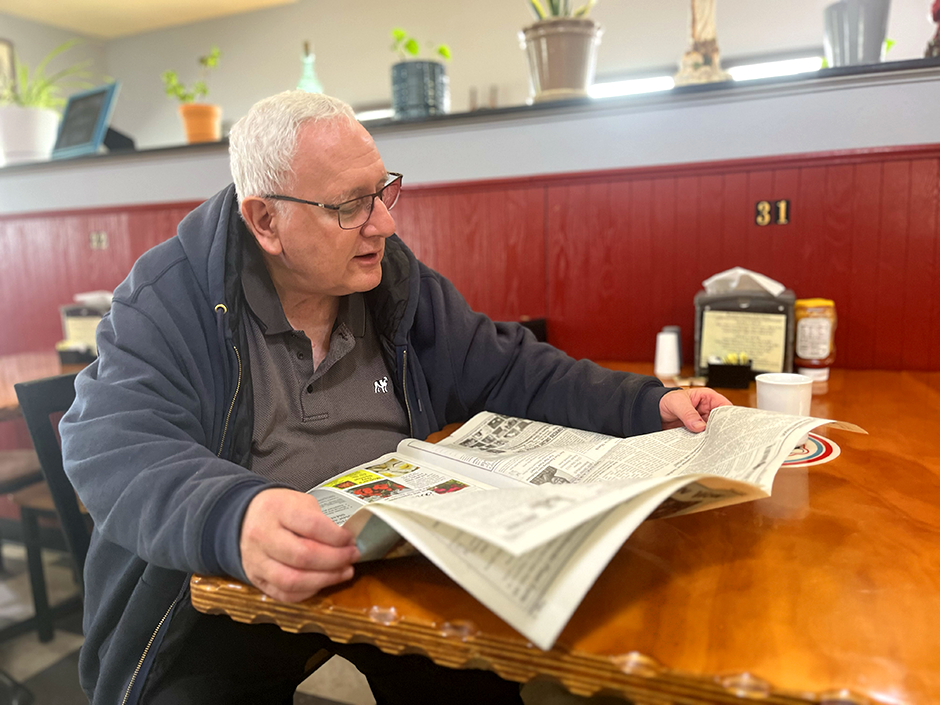
By Ava Kian / MinnPost
See the original story at minnpost.com.
The Rev. John Cox opened the latest edition of the Mahnomen Pioneer as he sat and sipped his morning coffee at Pappy’s Cafe in Waubun, a village of 400 people in Mahnomen County in northwestern Minnesota.
A priest at St. Ann’s Church in Waubun, Cox said he reads the paper to catch up on what’s happening around him. “This is an important time because we’ve got a tribal election coming up and (the Pioneer) gives some good coverage of the candidates,” Cox said. “(The Pioneer is) absolutely important.”
For Robert Durant, the owner of a Mahnomen auto shop where people sit and read the paper while they wait for their cars to be fixed, the paper helps him to keep tabs on his city. “I get a good understanding of what Mahnomen is all about,” he said. “You know, because there’s a lot of great things that happen here. A lot of small towns, they’re disappearing.”
With a circulation of 1,200, the Pioneer is the only newspaper in Mahnomen County, meaning that, for many people like Cox and Durant, it’s the only source of information and connection with what’s going on in the area.
Indeed, the paper is deeply embedded into daily life in this county of 5,300 residents, which sits entirely within the White Earth Indian Reservation in this far-flung part of the state.
Owner and editor Sue Kraft – who also reports, takes photographs, sells ads and performs many other duties for the publication — began working at the Pioneer in the 1990s. She bought the paper in 2010 and lives above her office.
She said the Detroit Lakes Tribune, located 35 miles to the south, doesn’t focus on Mahnomen. And the larger papers, like the Fargo Forum and the Minneapolis Star Tribune, will often cover big stories in town but not much else, she said.
So it’s up to the Pioneer.
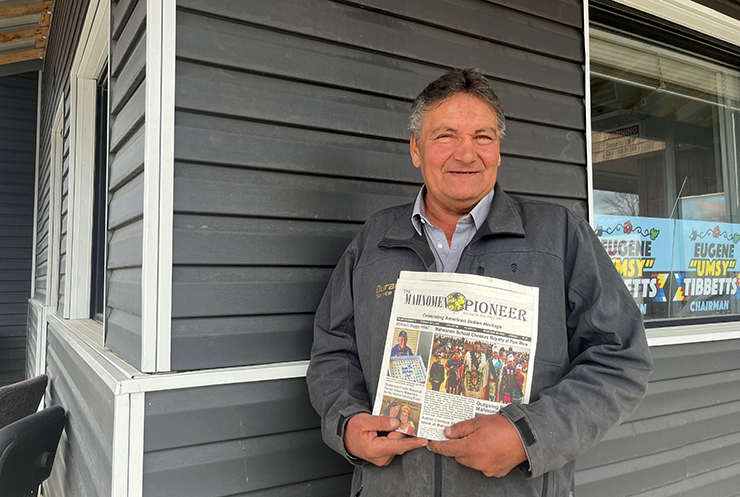
Weeklies on the decline
Across the nation, local news coverage has been on the decline for years — disrupted by the digital age and changing news consumption habits — and Minnesota is not the exception. In the past several years, the capacity of many news organizations has dwindled and many local papers have closed.
In April, Southwest News Media, which was acquired in 2020 by Denver-based MediaNews Group, shut down six weeklies in the Twin Cities suburbs. Two sister papers in rural areas, the Hutchinson Leader and the Litchfield Independent, also closed, along with MNG’s affiliate printing plant, Crow River Press.
Those papers covered niche politics and news across Chanhassen, Chaska, Jordan, Prior Lake, Shakopee and Savage.
Noah Mitchell, who was a reporter at the Chanhassen Villager (one of the papers that closed), said it was a critical piece for starting conversations and encouraging civic engagement. “The mayor mentioned the loss of the paper and how important community feedback is to the city government and how they’re going to be losing an outlet for that,” he said.
Studies have shown that civic engagement declines when local news outlets close. One review found that 81% of people who follow local news “very closely” are likely to vote, compared with only 35% of those who do not pay close attention to local news.
Some communities have found a way to survive.
CherryRoad Media, which owns papers in 17 states, started papers in Hutchinson and Litchfield just weeks after their papers were shuttered.
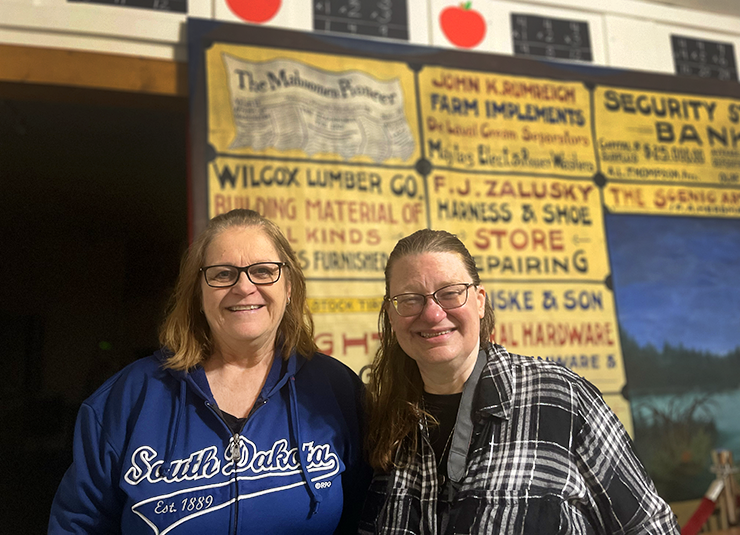
The company now has 12 papers in Minnesota. Chief executive Jeremy Gulban said it made sense for the company to pick up the two closed papers since it revived a paper in 2021 following the closure of a newspaper in International Falls on the Canadian border.
“When the announcement (of the closures) came out, our COO went out to Hutchinson in Litchfield and met with a bunch of folks there: the mayor, city managers, city council members, business people, chamber directors, etc., and really got a lot of positive feedback that the communities wanted to have a newspaper,” Gulban said.
The Hutchinson Station and Litchfield Rail were born.
Northwestern University’s Medill School of Journalism analyzed the presence of news outlets across the United States as a part of its annual “State of Local News” project. [Find the interactive map for detailed information about Minnesota]. It found that in 2023 local news outlets continued to close — at an even steeper rate than in previous years — and that the growth in new outlets and alternate local news has not kept pace with what’s being lost.
The researchers estimated that by the end of next year, the country will have lost a third of its newspapers since 2005. A majority of the communities affected by those closings have been poorer and without access to high-speed internet.
No companies, however, have come forward to resurrect the other six MediaNews Group papers, which were located in Carver and Scott Counties in the southwest metro region. The Patriot, with editions in Waconia and Norwood-Young America/Watertown, soldiers on in western Carver County while in Scott County only the New Prague Times remains.
‘News deserts’ on the rise
According to the study, people in more than half of the country’s 3,100 counties either do not have a local news outlet or have only a single surviving outlet. These counties are referred to as “news deserts” — communities where residents have limited access to critical news and information that nurtures both grassroots democracy and social cohesion.
Minnesota has 15 counties with just one news source.
The study found that 1,562 counties have a single source of local news — generally a small weekly or daily newspaper that is either locally owned or part of a small chain and will cover everything from school board meetings to local government to high school sports.
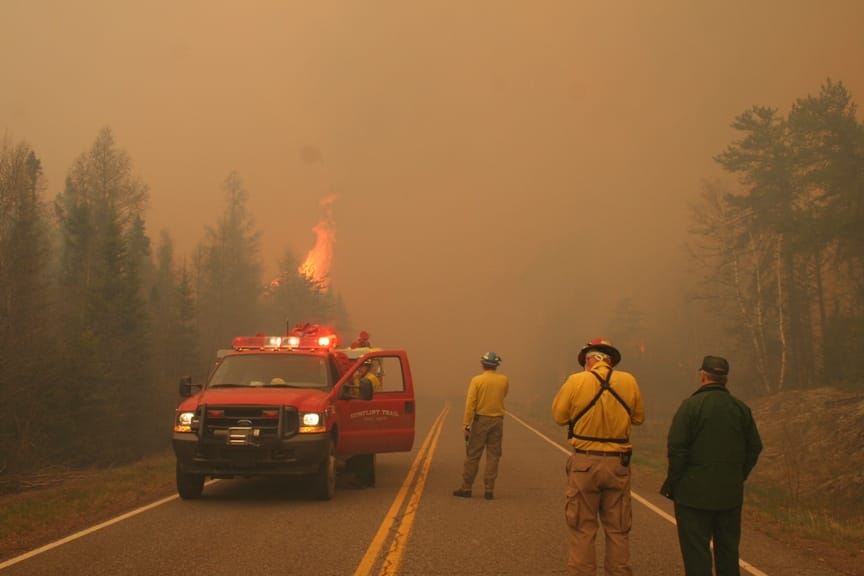
Of those counties, researchers identified 228 as being at a heightened risk of losing their last remaining newspaper.
Mahnomen County is one of them.
The watch list was determined using the demographic characteristics of current news deserts – and seeing which counties already have limited news access and characteristics similar to news deserts, said Zachary Metzger, the director of the State of Local News Project.
Poverty is one of those factors. Residents in the watchlist counties tend to be much poorer than those in the other counties that just have one news source. In Mahnomen County, 18% of the population lives in poverty, compared with the state rate of 9.6%, according to census data.
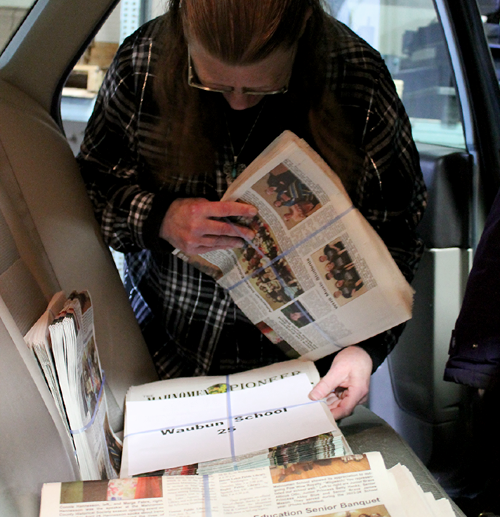
Kraft, who hadn’t heard about the study, continues to work tirelessly to get the paper out every week.
Doing so has taught her how much her community relies on the Pioneer. It’s why her shoes are falling apart at the soles, why she spends every Wednesday getting in and out of her Ford Taurus delivering papers, and why she stays up until late hours of the night getting the paper ready for print.
“Every time a paper goes down, it’s sad because it’s all that dedication and effort,” she said with tears in her eyes. “This is what small town papers are doing and what they mean to their communities. Every time this small town paper goes down, that’s what’s been lost — all that dedication, all that effort, all that history, all that.”
A third of Minnesota’s papers lost
In 2023, the country lost 2.5 newspapers per week, up from 2 or 1.5 in previous years, the Northwestern University study found.
Between 2005 and 2023, North and South Dakota, Iowa and Minnesota lost the most newspapers per capita, with most of them being weeklies. Of these states, Minnesota has lost the third most per capita (2.2 papers for every 100,000 people).
According to a report from the Center for Rural Policy and Development, a think tank based in Mankato, among the approximately 120 Minnesota newspapers that disappeared between 2000 and 2022, around 40% of them were weeklies serving the Twin Cities suburbs while the other 60% were Greater Minnesota papers.
Since 2004, Minnesota has lost 135 papers, 131 of them weeklies. In terms of count, Minnesota has lost the sixth most newspapers since 2004; that’s 37% of its papers, ranking 19th in the country, according to Metzger.

In the past five years alone, as newspapers have merged across Minnesota, the state has lost about 50 papers, said Lisa Hills, the executive director of the Minnesota Newspaper Association. “We’ve seen a lot of consolidation, which has resulted in fewer newspapers. But we were not seeing a lot of outright closures up until a few weeks ago,” she said in reference to the MediaNews Group closings.
Hills noted that in many small towns, sometimes the sole person at city council or school board meetings is a local reporter, representing the public.
She added: “Newspapers can really tell the history and story of the community, and they share the good news and the bad news and the celebrations. They’re the one piece that ties everyone in the community together.”
Some promising developments
Nationally, digital news organizations — many of them nonprofit outlets like MinnPost — have attempted to fill some of the gap, though primarily in urban regions, with 90%-95% of digital startups being in metropolitan areas, Metzger said.
That’s a gap that Nora Hertel, a journalist who worked at several papers owned by Gannett, has recognized. Hertel moved to St. Cloud to work for the Gannett-owned St. Cloud Times in 2017 after working at a Gannett paper in Wisconsin.
She survived several rounds of layoffs and saw the instability they brought to the newsroom and the reporters’ ability to produce impactful work.
In 2021, there was another wave of layoffs at the Times.

As they lost people, “it just got hard to cover those things,” she said. “I was an investigative reporter there. And it was hard for me to do big investigations. I could only focus on probably one at a time, and it would take me months to complete it because we had a daily paper to do every day.”
When she left the company in 2021, she said, around 12 people still worked at the St. Cloud Times — compared with the nearly 15 when she started. The following year, things unraveled with two reporters getting laid off, one reporter leaving and buyouts for senior staff. By the end of that year, three people were working there.
She left with the hopes of creating a news organization that would focus on Greater Minnesota. She applied for a fellowship and received funding that helped her to get Project Optimist off the ground.
“I made the decision to focus on greater Minnesota because, you know, to be honest with you, because MinnPost exists, Sahan Journal exists and the Star Tribune exists, and public radio is based in the Twin Cities,” she said, “there’s a lot concentrated in those areas. And I think that Greater Minnesota needs more media.”
Project Optimist’s staff of four people covers issues that affect Greater Minnesota with a focus on solutions journalism — bringing hope and positivity to news, something that she learned people wanted more of.
In Cloquet, meanwhile, the weekly Pine Knot News works to keep the news in the city at its core.
The paper was started in 2018 after some staffers left the Pine Journal, a weekly owned by Forum Communications, over fears that the company was reducing its focus on Cloquet, according to Jana Peterson, the editor of the Pine Knot News.
“We are your hometown newspaper, and we’re not part of the big corporation that might pull out next week,” she said. “Local news gets people verified knowledge of whatever’s happening, a watchdog function, of course, an investigative function.”
The Pine Knot News isn’t rolling in dough, either, but Peterson said that’s not what they’re there for. “We’re just making enough money to pay our staff and pay our rent,” she said. “But, I mean, you just can’t be in it to make bank anymore. You have to be in it for the right reason.”

Most of its 1,900 subscribers are Cloquet residents, although, like the Mahnomen Pioneer, the Pine Knot news gets delivered to people in other states. At first, the paper struggled financially because it didn’t run the routine legal ads that can make up as much as 20% of a small paper’s income.
“I do think that we are proof that a traditional newspaper can still succeed,” Peterson said. “We sell ads and subscriptions to survive and pay the bills.”
Some ideas for help have been floated at the federal level. One proposed bill, for instance, would provide a tax credit to businesses that advertise in their local paper and a payroll tax credit to papers that hire and keep local journalists.
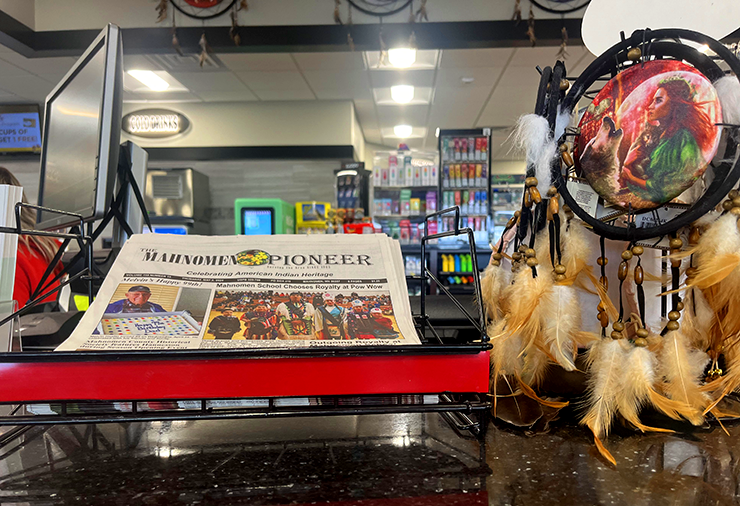
A full day in Mahnomen
When Kraft first started at the Pioneer, there were certainly more bodies around. These days, it’s just her and Michael Flake, who does the design and layout work.
Every Wednesday morning, Kraft drives about 40 minutes from Mahnomen to Detroit Lakes to pick up the papers from the printing press. She then organizes them into her car, based on the order in which she’ll be making deliveries.
She starts in Ogema and drops off papers at various locations — gas stations, community centers, pharmacies and local restaurants — as she makes her way back to Mahnomen. The cycle can take as long as four hours.
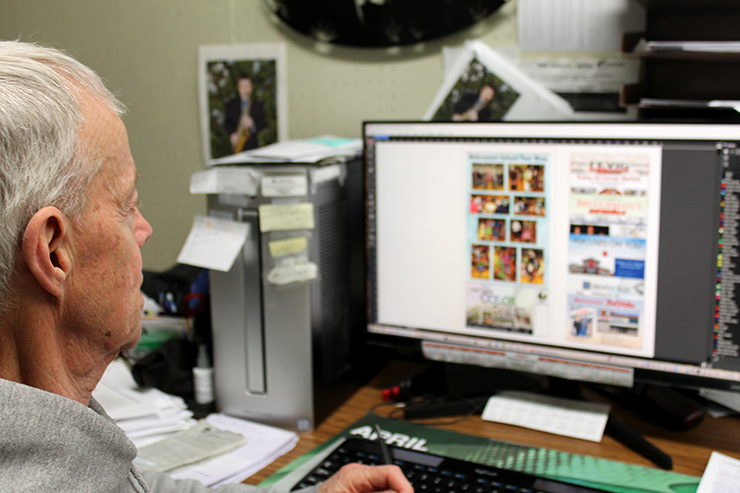
On a recent morning, at each stop it was clear that people were eager to read the paper. Longtime reader Darlene Stevens shouted from inside the gas station: “Sue, I haven’t been getting my Mahnomen Pioneer!”
“If I don’t have the paper, I miss it,” said Stevens, who’s been reading the paper for half a century.
Kraft also delivered the papers at the school in Mahnomen, which houses elementary, middle- and high school students. She watched as the school secretary went through each bit of the paper and commented on things she liked. Kraft drops off the paper at the school for people there to read, but also for the students in classes, who have done reports on various parts of the paper since Kraft has owned it.
When Kraft finally got back to the office, she went upstairs to her home to prepare a salad for her and her coworker. And after lunch, she began working on billing for the week, because, of course, she does the bookkeeping, too.
‘Keep it or lose it’
In an average year for the Mahnomen Pioneer, Kraft said she’ll break even financially if she’s lucky.
The Pioneer has around 800 subscribers to the physical paper and 250 online subscriptions and sells a couple hundred each week at drop-off sites.
Kraft brings in about $14,000 in revenue each month from advertising and other sources, but printing the paper once a week for a month costs $3,700. “But that’s not my only expense,” she said. “(People) don’t really realize what’s actually involved.”
At one point, she was making enough money to have more staff and they were able to cover more of the happenings in the community. But as the industry has changed, she’s had to “adapt to survive.”
“I wish I had more people to help me in the operation. I wish I was making more money. I wish I had the money to replace my vehicle,” she said. “I wish I had the money to replace my computers. I wish I had the money to do all of these things.”
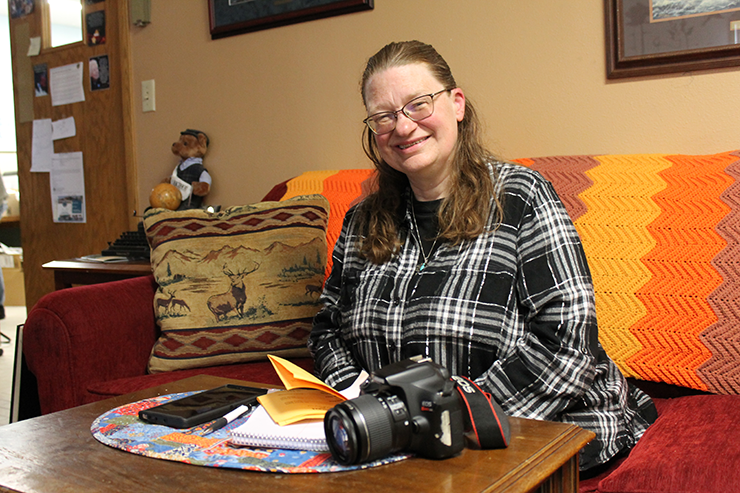
Yet the paper continues on.
“We’re in a poverty area, and we may be the only paper, but we’re also surviving,” Kraft said. They (the community) are supporting us. They don’t want to see us go down. Because who’s going to come here to cover the stories of their lives, right?”
Flake, the Pioneer’s designer, said Mahnomen needs the paper to access information, while people in more urban areas simply have more ways to get the news. He worked for Southwest News Media from 1999 to 2012 and said what he’s noticed with its downsizing and ultimate closure is that the need for news sources is greater in rural areas.
“Why (would) you survive, when you’ve got the Star Tribune and other papers?” he asked. “Here, you’ve only got one. So you either keep it or you lose it.”
